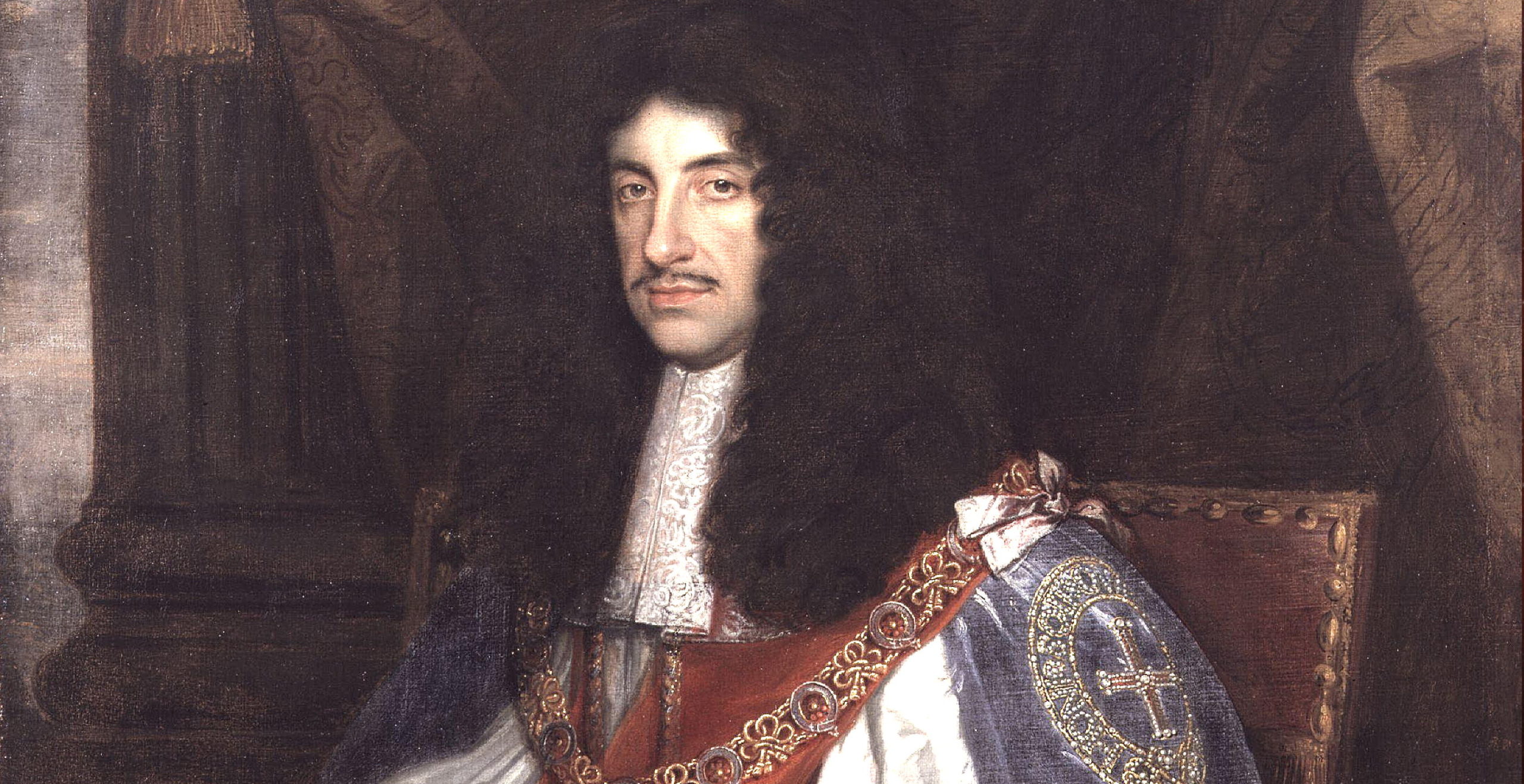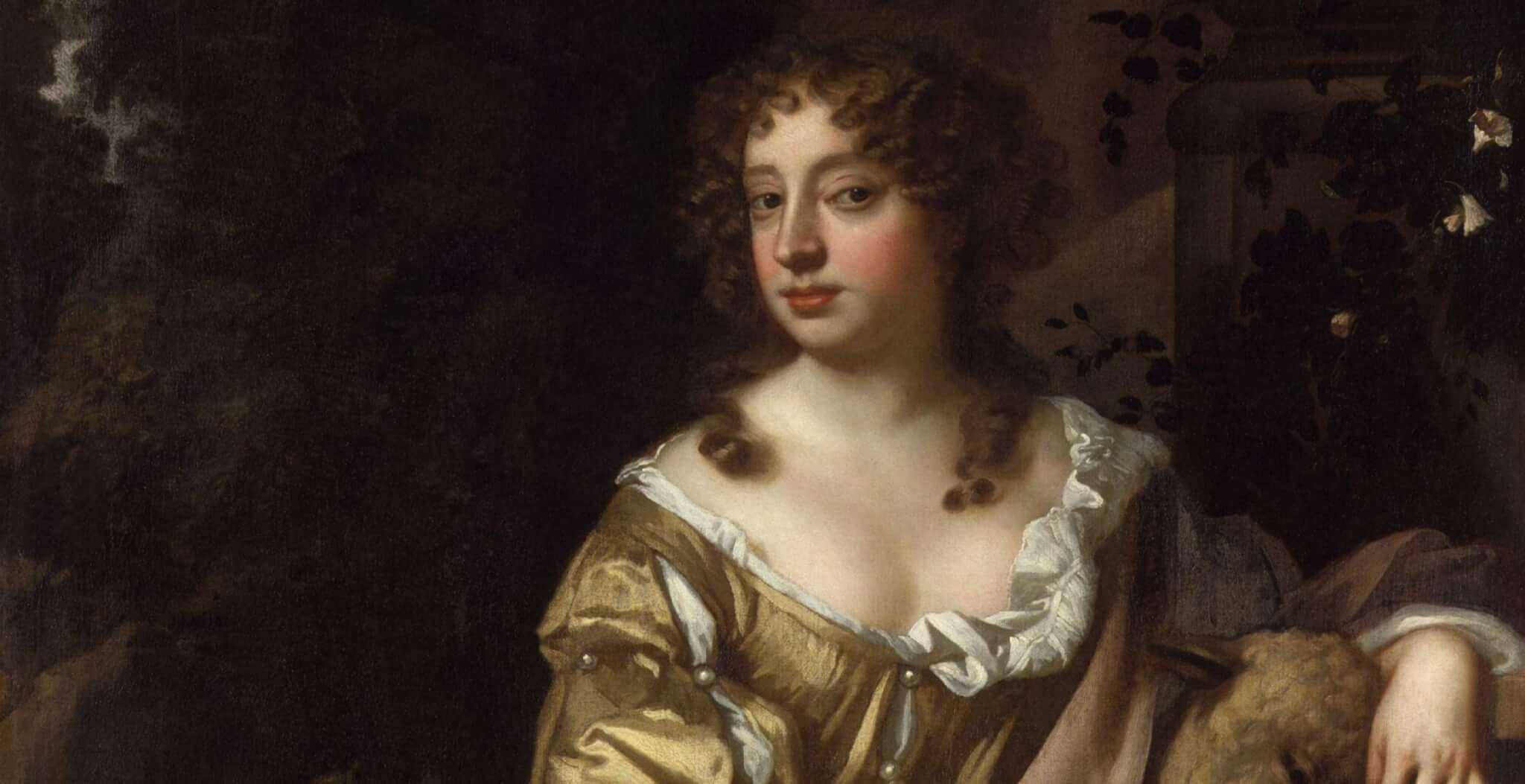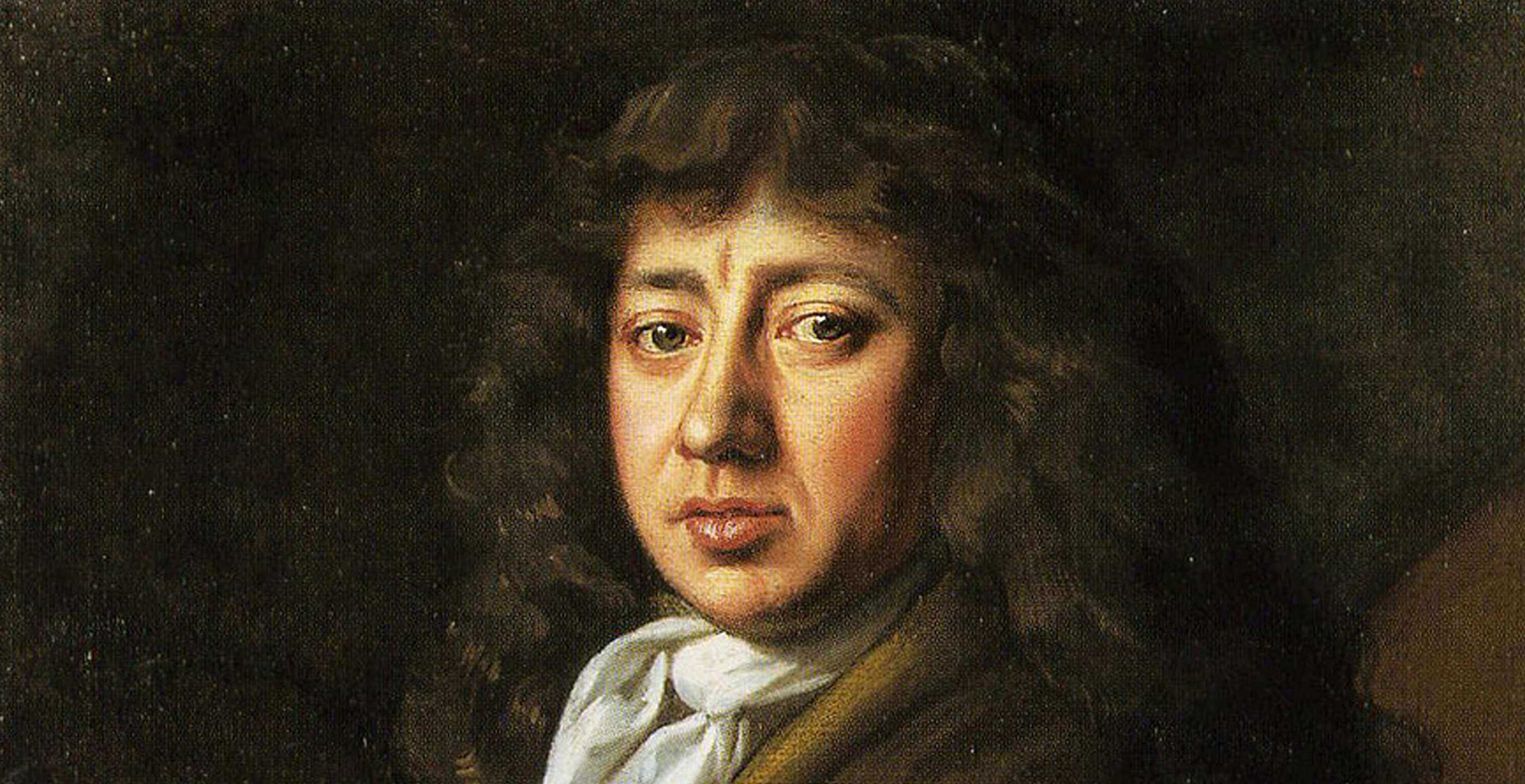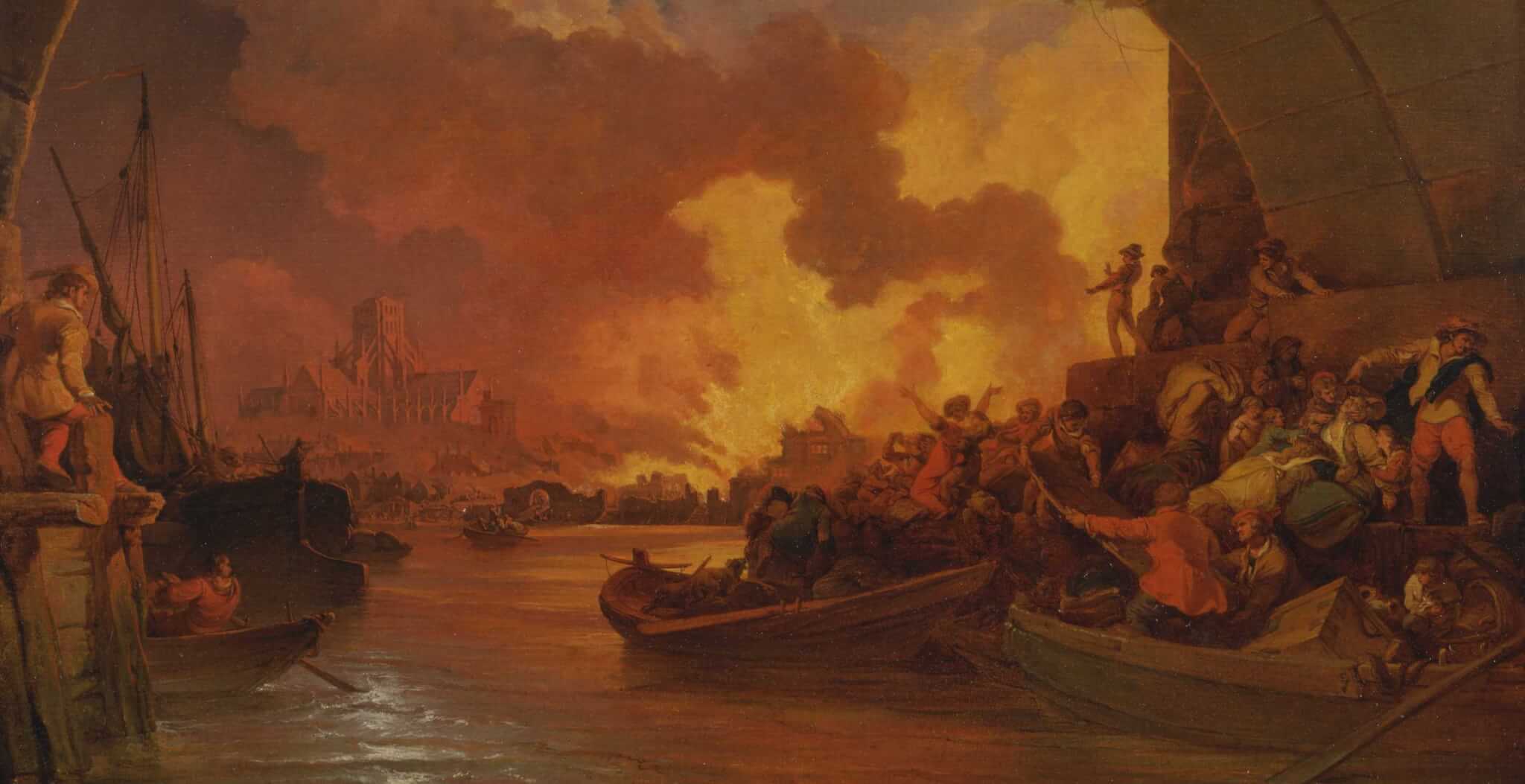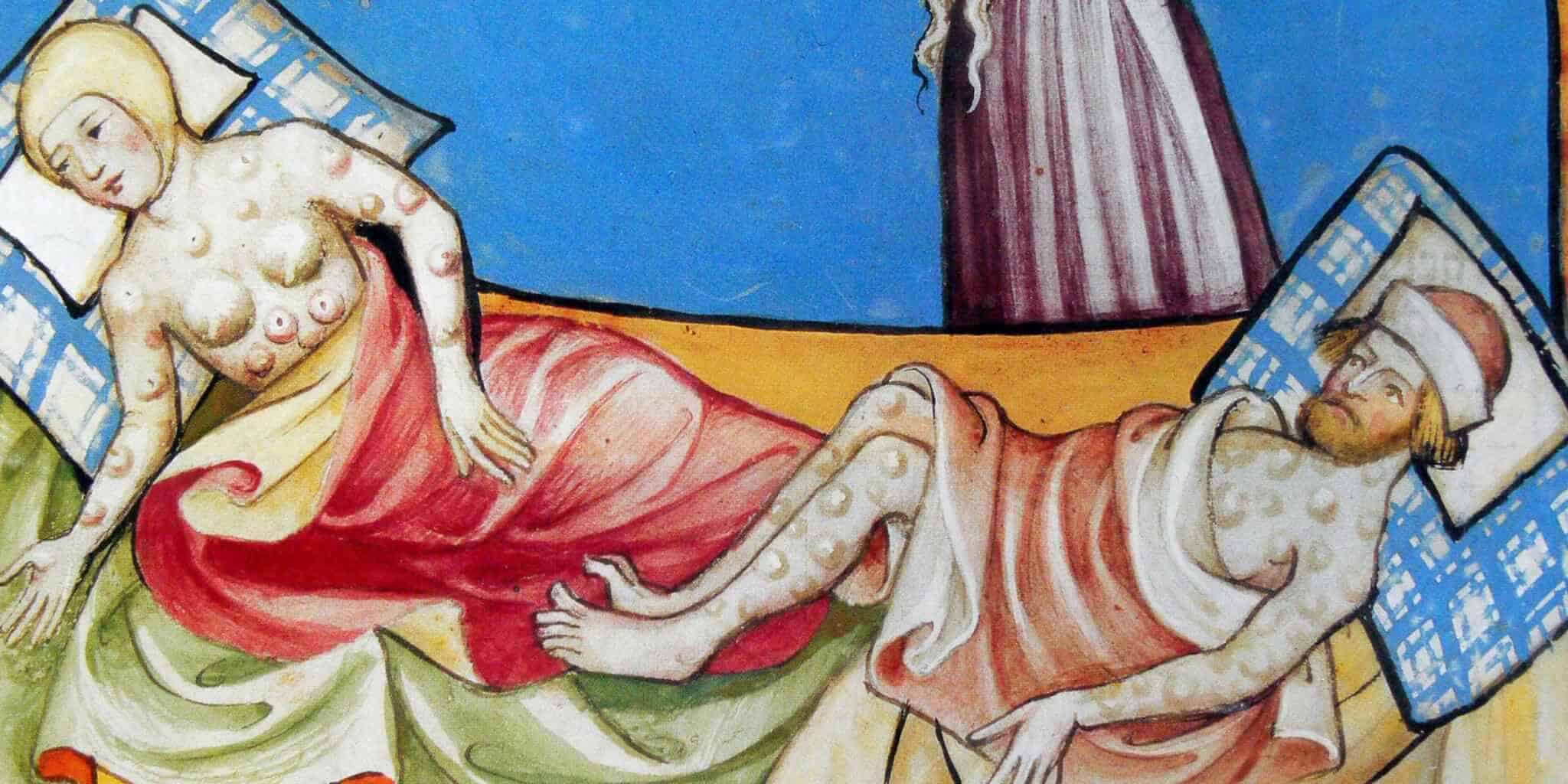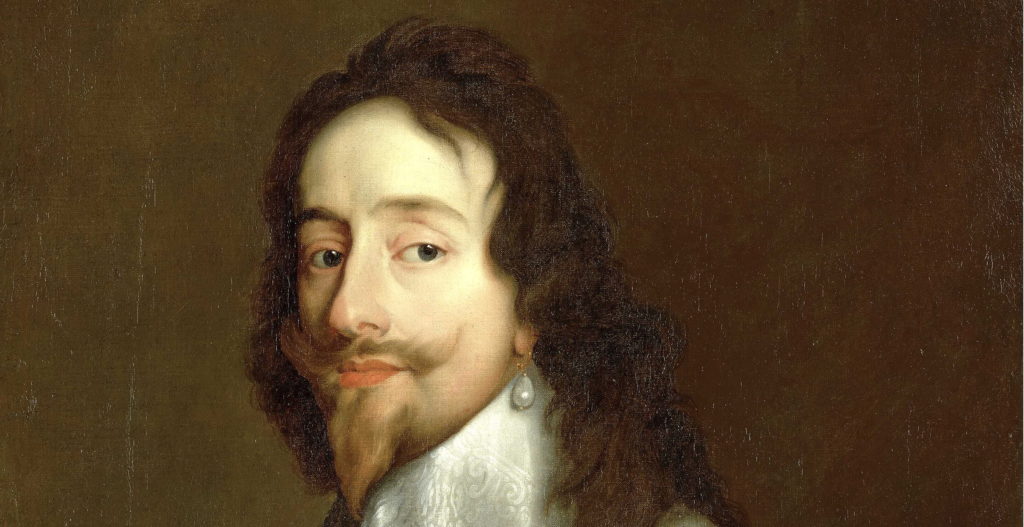On 29th May 1660, on his 30th birthday, Charles II arrived in London to a rapturous welcome.
This was a defining moment not only for Charles personally but for a nation that wanted to see a restored monarchy and a peaceful transition after years of republican experiment.
The son of the deposed and executed King Charles I, young Charles II was born in May 1630 and was only twelve when the English Civil War broke out. Such was the socially volatile climate in which he grew up, that at the age of fourteen he was put in charge as commander-in-chief in western England.
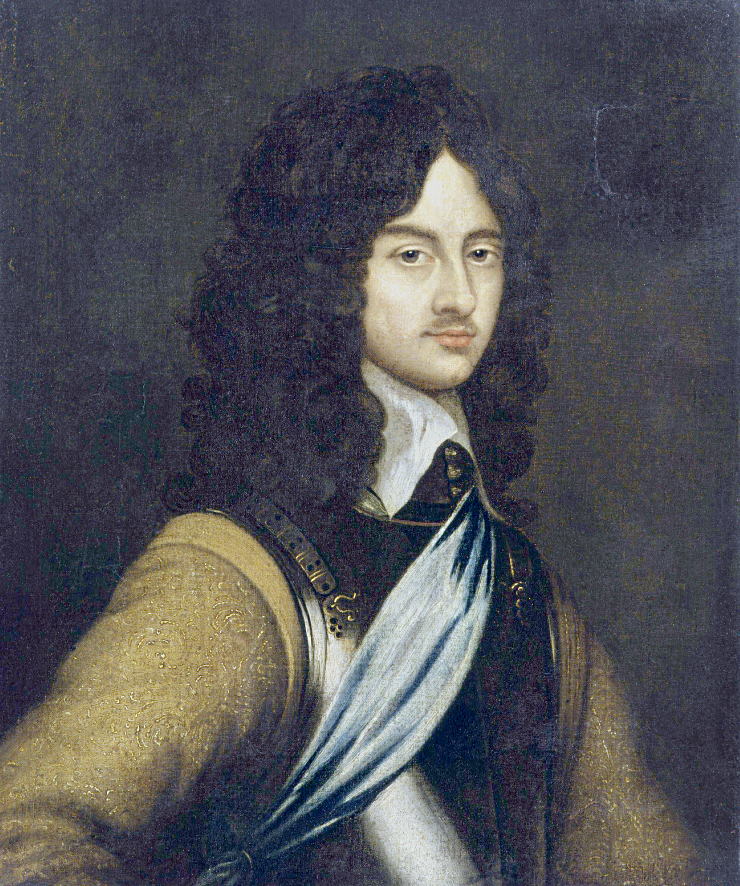
Sadly for the royals, the conflict resulted in a parliamentary victory, forcing Charles into exile in the Netherlands where he would learn of his father’s death at the hands of the executioners.
After the death of his father in 1649, the following year Charles made a deal with the Scots, leading an army into England. Sadly, his attempts were fended off by the Cromwellian forces at the Battle of Worcester, forcing the young royal into exile as the republic was declared in England, ousting both him and centuries of traditional monarchical rule.
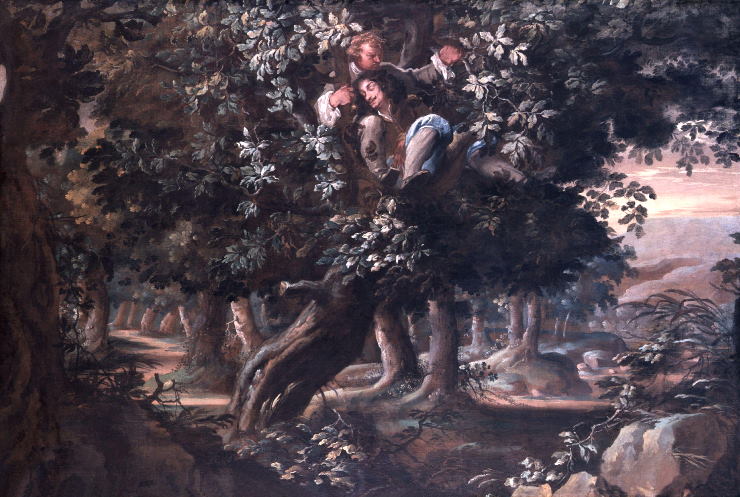
Whilst Charles lived on the continent, the constitutional experiment of the English Commonwealth played out, with Oliver Cromwell becoming de facto king and leader in all but name. After nine years the lack of stability and ensuing chaos looked set to topple Cromwell’s ideology.
After Cromwell himself passed away, the writing was on the wall as it would only take eight months of his son, Richard Cromwell in power, before the republican chapter of English history was brought to a close. With none of his father’s style and rigour, Richard Cromwell agreed to resign as Lord Protector, ushering in the restoration of the monarchy.
The new “Convention” Parliament voted in favour of the monarchy, hoping to bring the political crisis to an end.
Charles was subsequently invited back to England and on 23rd April 1661 at Westminster Abbey, he was crowned King Charles II, marking a jubilant return from exile.
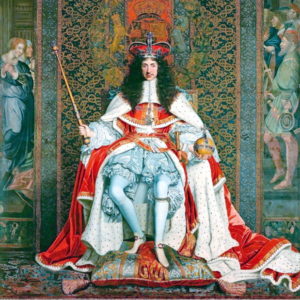
Despite the victory of hereditary monarchy, there was a lot at stake after such a lengthy reign of social and political instability under Cromwell. Charles II now needed to reclaim power whilst also balancing the demands of those that had forced through the Commonwealth. Compromise and diplomacy were needed and this is something that Charles was able to fulfil instantly.
With the legitimacy of his rule no longer in question, the issue of parliamentary and religious freedoms remained at the forefront of governance.
One of the first steps in this process was the Declaration of Breda in April 1660. This was a proclamation that essentially pardoned the crimes committed in the period of the Interregnum as well as during the English Civil War for all those who recognised Charles as king.
This declaration was drawn up by Charles as well as three advisors as a stepping stone in settling the antagonisms of the period. Charles however did expect that those directly responsible for his father’s death would not be pardoned. The individuals in question included John Lambert and Henry Vane the Younger.
Another important component of the declaration included the promise of toleration in the area of religion which had for so long been a source of discontent and anger for many, particularly for the Roman Catholics.
Moreover, the declaration attempted to settle the differences of various groups, including the soldiers who had back payments retrieved and the landed gentry who were given assurances regarding matters of estates and grants.
Charles in the early years of his reign was attempting to heal the rift created by the Civil War, however the positive social developments were marred by sad personal circumstances when both his younger brother and sister succumbed to smallpox.
Meanwhile, the new Cavalier Parliament was dominated by several acts which sought to reinforce and strengthen Anglican conformity, such as the compulsory use of the Anglican Book of Common Prayer. This set of acts became known as the Clarendon Code, named after Edward Hyde, on the basis of tackling nonconformity with an eye to maintaining social stability. Despite Charles’s misgivings, the acts went ahead in contrast to his preferred tactic of religious tolerance.
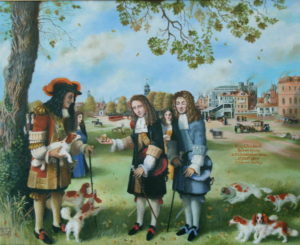 Charles II meets scientist Robert Hooke and architect Christopher Wren in St James’ Park, 6th October 1675. Christopher Wren was a founder of the The Royal Society (originally the Royal Society of London for Improving Natural Knowledge).
Charles II meets scientist Robert Hooke and architect Christopher Wren in St James’ Park, 6th October 1675. Christopher Wren was a founder of the The Royal Society (originally the Royal Society of London for Improving Natural Knowledge).
In society itself, cultural changes were also developing with theatres opening their doors and literature once more began to thrive.
Whilst ushering in a new era of monarchy, Charles II’s reign was anything but smooth sailing, in fact, he ruled during several crises, including the Great Plague which ravaged the country.
In 1665 this major health crisis struck and in September the mortality rate was thought to be around 7,000 deaths in one week. With such a catastrophe and threat to life, Charles and his court sought safety in Salisbury whilst the parliament continued to meet in the new location of Oxford.
The Great Plague was thought to have resulted in the death of one-sixth of the population, leaving few families untouched by its devastation.
Only a year after its outbreak, London faced another great crisis, one that would devastate the very fabric of the city. The Great Fire of London broke out in the early hours in September 1666, within days it had swept through entire neighbourhoods, leaving just burning embers.
Such a sad spectacle was recorded by the famous writers of the day such as Samuel Pepys and John Evelyn who witnessed the destruction first-hand.
The uncontrollable fire had wreaked havoc on the city, destroying many architectural landmarks including St Paul’s Cathedral.
In response to the crisis, the rebuilding act was passed in 1667 in order to avoid such a catastrophe from occurring again. For many, such large scale devastation was seen as a punishment from God.
Meanwhile, Charles found himself occupied by another situation, this time international, with the outbreak of the Second Anglo-Dutch War. The English secured some victories such as the capture of the newly renamed New York, named after Charles’s brother, the Duke of York.
There was also cause to celebrate at the Battle of Lowestoft in 1665, however the success was short-lived for the English who had not done enough to scupper the Dutch fleet who quickly became resurgent under the leadership of Michiel de Ruyter.
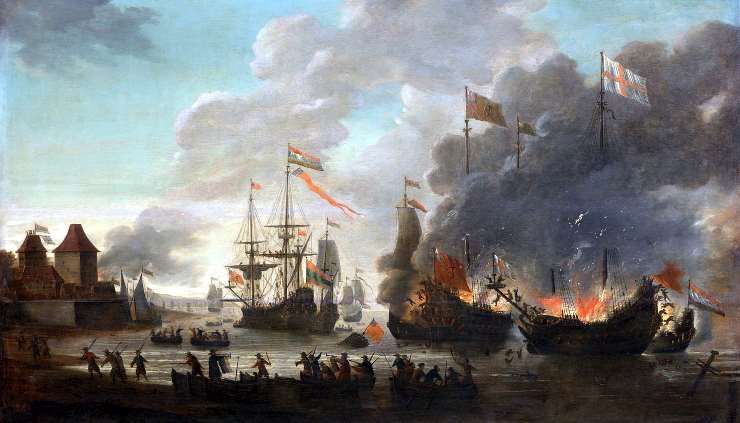
In 1667, the Dutch dealt a devastating blow to the English navy as well as the reputation of Charles as king. The Raid on Medway in June was a surprise attack launched by the Dutch who managed to attack many of the ships in the fleet and capture the Royal Charles as a spoil of war, returning with it to the Netherlands victorious.
The jubilance of Charles’ accession and reclamation of the throne was marred by such crises which undermined his leadership, prestige and the morale of the nation.
Much of the antagonisms would fester and precipitate the Third Anglo-Dutch War whereby Charles would openly show support for Catholic France. In 1672, he issued the Royal Declaration of Indulgence which essentially lifted the restrictions imposed on the Protestant nonconformists and Roman Catholics, ending the penal laws which had prevailed. This would prove to be highly controversial and the Cavalier Parliament would the following year force him to withdraw such a declaration.
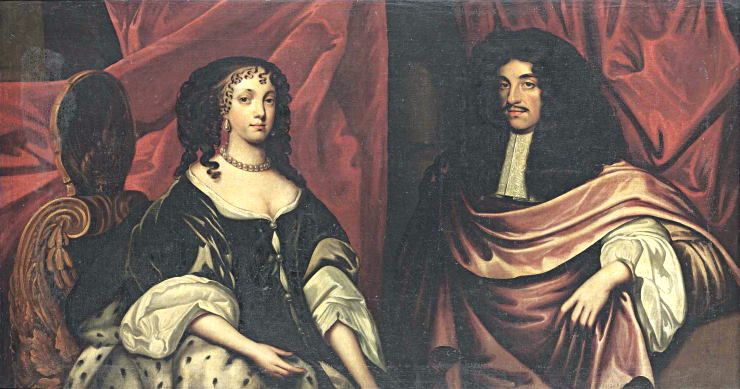
With conflict growing, matters were made worse when Charles’s wife, Queen Catherine, failed to produce any heirs, leaving his brother James, Duke of York as heir apparent. With the prospect of his Catholic brother being the new king, Charles found it necessary to reinforce his Protestant leanings by arranging a marriage for his niece Mary to the Protestant William of Orange. This was a blatant attempt to extinguish the growing religious turbulence which had plagued his rule and his father’s before him.
Anti-Catholic sentiment once again reared its head, this time, in the guise of a “Popish plot” to assassinate the king. Hysteria prevailed and the prospect of a Catholic monarch succeeding Charles did little to quell it.
One particular figure of opposition was the 1st Earl of Shaftesbury who had a strong power base, none more so than when parliament introduced the Exclusion Bill of 1679 as a method of removing the Duke of York from the succession.
Such legislation had the impact of defining and fashioning political groups, with those that found the bill abhorrent becoming known as Tories (actually a reference to Catholic Irish bandits) whilst those who had petitioned for the bill were called the Whigs (referring to Scottish rebel Presbyterians).
Charles saw fit in the light of such chaos to dissolve parliament and assemble a new parliament in Oxford in March 1681. Sadly, it became politically unworkable and with the tide of support turning against the bill and in favour of the king, Lord Shaftesbury was ousted and exiled to Holland whilst Charles would rule for the remainder of his reign without parliament.
Such was the cyclical nature of monarchy in this era that Charles II ended his days as an absolute monarch, a crime for which his father had been executed only decades earlier.
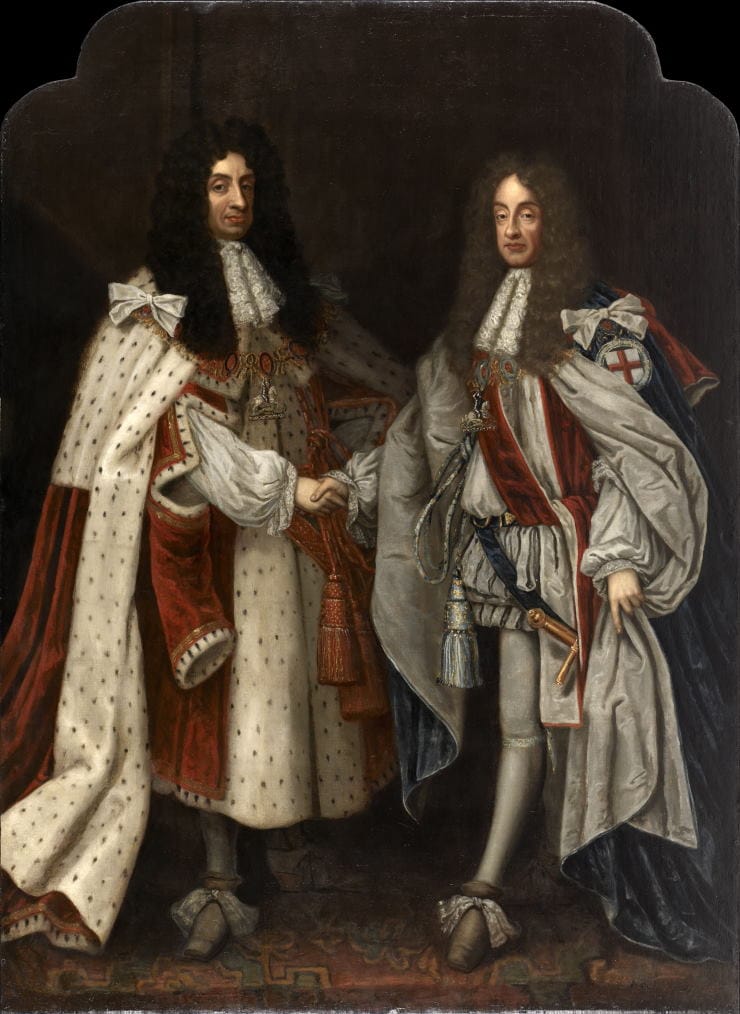
On 6th February 1685 his reign came to an end. Dying at Whitehall, Charles passed the mantle on to his Catholic brother, James II of England. Not only did he inherit the crown but all unresolved problems which came with it, including issues of divine rule and religious tolerance which had yet to find its equilibrium.
Jessica Brain is a freelance writer specialising in history. Based in Kent and a lover of all things historical.
Published: February 12, 2021.
